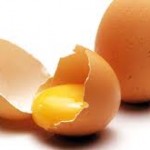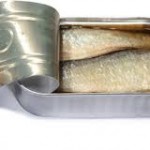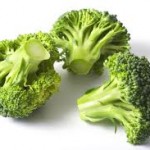It is reasonable to assume that the majority of Police K9s today are fed a commercial dry dog food diet. Ideally, raw feeding is the best diet option due to the overwhelming amount of health benefits it offers, however, it is not always the most practical when you work midnight shifts, get unexpectedly called out, etc. A raw diet is often not feasible for most K9 handlers simply due to time constraints and the need for a convenient method of feeding their K9 partners.
Despite these prohibiting factors, there are still a few ways that you can ensure your K9 is getting all the nutritional benefits he needs. Even the best commercial dog food diets can be enhanced with the addition of fresh foods. Listed below are a few examples of simple, easy foods to add to your dog’s diet:
1. Eggs: Few foods can beat the nutritional impact of eggs, with their combination of high-quality protein and fat along with a wide variety of vitamins and minerals. Eggs are inexpensive and easy to feed, too. Egg whites are more easily digested when cooked, while yolks retain more of their nutritional value if fed raw. Most dogs have no trouble with bacteria in raw eggs, but it’s fine to feed soft-cooked, hard-cooked, or scrambled eggs.
A large egg provides about 70 calories; this amount is fine for medium-sized and larger dogs, but smaller dogs would do better with half an egg daily, or one egg every other day, with meals reduced proportionately.
Do not include the shell when you feed eggs, as the shells contain far more calcium than your dog needs. Too much calcium can be harmful to large-breed puppies, and also binds other minerals, making them less available to your dog.
2. Yogurt: A natural source of probiotics, yogurt is another food that is inexpensive and easy to feed. Stick to low-fat or nonfat plain yogurt, as your dog doesn’t need the sugar provided in the flavored varieties.
The probiotics (beneficial bacteria) in yogurt provide benefits for all dogs, but are especially good for dogs with digestive problems. Use yogurt with live and active cultures. Varieties that contain more than just Lactobacillus acidophilus may provide additional benefits to the digestive tract.
Low-fat yogurt has less than 20 calories per ounce, so even small dogs can enjoy a spoonful without concern about reducing food portions.
3. Sardines: Fish supply omega-3 fatty acids EPA and DHA that are good for the skin and coat. In addition, they help regulate the immune system and reduce inflammation, and so can be helpful for dogs with allergies, arthritis, and autoimmune disease. DHA is also good for brain health, which can benefit both puppies and senior dogs.
One small canned sardine provides about 25 calories and 175 mg omega-3 fatty acids, a good amount for a small dog (20 pounds or less). Give larger dogs proportionately more. Use sardines packed in water (not oil). Feed soon after opening so the fatty acids are still fresh.
Other canned fish options, especially for larger dogs, include jack mackerel and pink salmon.
4. Vegetables and fruits: Berries, especially blueberries, are packed with antioxidants. Other good fruits to feed include bananas, apples, and melon; some dogs even like citrus. Don’t feed the pits, and avoid grapes and raisins, which can cause kidney failure when eaten in large quantities.
Leafy green veggies are a much better choice than starchy foods such as grains and potatoes. Vegetables are more nutritious when fed cooked, but raw veggies, such as carrots, zucchini slices, and even frozen peas, make great low-calorie snacks. Non-starchy vegetables can also be included in your dog’s meals to increase the quantity you feed without adding significant calories. Cruciferous veggies, such as broccoli, are especially nutritious, but watch out: too much can cause gas.
5. Healthy leftovers: I know that pet food companies and often veterinarians discourage giving leftovers to dogs, but as long as you stick to healthy foods and limit portions, there is no harm in sharing your meals with your dogs. Feed the same foods you eat yourself, such as meat and vegetables, not fatty scraps that lead to weight gain and have little nutritional value. Keep amounts small, or reduce meal size to accommodate the extra calories.
copyright Britney L. Pelletier 2011




